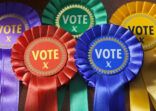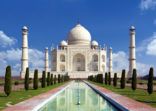Volatility is expected to rise as the November 8 US presidential election approaches, is what James Cheo, investment specialist at the Bank of Singapore, underscored in a recent research note.
This year markets will perhaps have stronger volatility than other election years because the plans of the two candidates would result in sharply different economic directions. Hillary Clinton has a more staus quo approach, while Donald Trump’s plans would “change the underpinnings of the US economy and have ramificiations for the markets”, he wrote.
“The US elections could sap away markets’ risk appetite. We continue to advocate a defensive investment strategy, preferring to take some profits and wait for better entry level before adding risks. The hunt for yield from highly-rated bond or equities remains relevant amidst rising political risk.
“While polls and markets are expecting a Hillary Clinton victory, Brexit’s surprise reminds us not to be too complacent.”
David Page, senior economist at Axa Investment Managers, also emphasised the “orthodox versus unorthodox” positions of the two candidates.
Clinton’s economic programme is generally in line with the status quo “although we expect it would provide modest fiscal stimulus in the first years”, he wrote in a research note. “She also proposes measures that would modestly begin to address rising inequality across the US.”
Donald Trump’s proposals by comparison are radical and risky, he said.
“Changes to trade and immigration policies appear likely to damage US supply potential,” and tax reform proposals could result in huge increases in public borrowing.
“Risks [of a Trump presidency] include the possibility of a fiscal boom-bust and a reduction of US longer-term growth potential.“
Deutsche Bank has an interesting set of data. In a research note on the US election, Christian Nolting, global CIO and Larry Adam, Americas CIO, write that market sentiment has been a “fairly reliable” indicator of who might win the US presidential elections.
“In 19 out of the past 22 elections, the incumbent party won when the market produced positive returns during the three months leading up to election day. Conversely, the challenging party won when the market turned negative during that three month period.”

Data is 1929-2015. Price return only. Source: FactSet, Deutsche Bank Wealth Management.
Historically, during all presidential election years since 1936, the second half market returns of the S&P 500 have averaged 7%, the report said. But it may be different in 2016.
The US market is expected to have a flat second half with “increased volatility and limited upside”.
“Price-to-earnings ratios are at their highest level since April 2010, so the market is already priced for optimism from both a political and earnings perspective.”
Rate rise?
In fixed income, Rick Rieder, chief investment officer of global fixed income at BlackRock, said recent data out of the US that shows an improving labour market implies upward pressure on wages. Yet market volatility and investor worry over the approaching election presents an obstacle to a rate hike this year.
“That kind of labor market environment does raise the odds of a Fed rate hike in 2016, although the US political calendar and unsettling events from abroad make it a higher hurdle.
“Moreover, we think the Fed would likely allow inflation to run a bit hotter, due to the inherent uncertainty of future growth, and if the inflationary increase were driven by higher wages it would be a trend the Fed would allow to persist.”
















